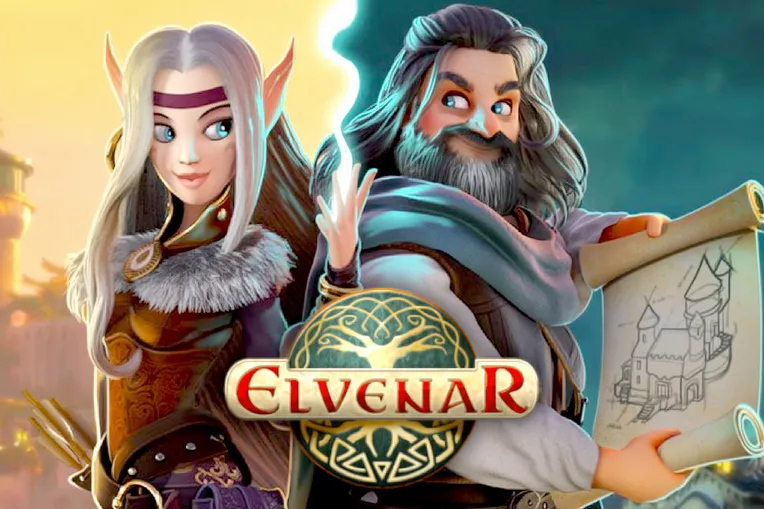Elvenar Review – Build Smarter, Rule Harder
Before we dive into the fantasy mayor life, here's a quick heads-up: you're not finishing this one in a single afternoon. Think magical bonsai. Slow. Weirdly satisfying. More rewarding than it has any right to be. Ready to lift the veil on your first hours? Grab your quill and let's go.
Starting Out in Elvenar: Your First Few Clicks
I clicked Elves, obviously. Who wouldn't want glittering treehouses instead of stone walls and sweaty blacksmiths? My city started as a tiny clearing with one lonely building: a Main Hall that looked like Rivendell's HR department.
The tutorial jumped in right away: build houses, gather supplies, expand your territory. I followed along like a good fantasy mayor, sipping coffee and watching timers crawl. Elvenar doesn't rush. Villagers have their own pace. They crank out planks, tools, and a lesson in patience. You don't bulldoze your way through. You plan your way in.
Building Your First City: Mistakes Will Be Made
Those early hours? Kinda cozy. I wasn't really "playing." I was curating. Every building, road, and tiny mushroom workshop needed thought. I proudly laid down a tree-lined boulevard... then tore it up two minutes later for a workshop shaped like a damp mushroom. Not proud of it.
My city grew in messy waves: houses here, culture buildings there, weird workshops humming like magical fax machines. Once I unlocked the province map and sent out my first scouts, it clicked.
Trade or combat? I chose violence. Haggling over goat cheese wasn't happening.
Combat in Elvenar: Chaos, Hex Grids, and Regrets
Elvenar's combat plays out on hex grids, like chess, but everyone's armed. I misread a tooltip, sent my melee guys into an archer killzone, and watched them get perforated like a bad idea.
But I learned fast: Mages need cover. Archers need space. Swordsmen need backup. The moment strategy finally lined up with the battlefield, that win hit just right.
Not into tactics? Hit auto-resolve.
Heads up though, the AI sometimes plays like it's drunk. One battle it's brilliant, the next it's sending healers into a meat grinder. Wild.
Elvenar Is Slow, and That's the Point
By hour four, my forest looked like a fantasy IKEA display: winding roads, glowing buildings, and enough trees for an elf rave. Then things hit molasses. Timers dragged. Production stacked up. Upgrades stalled.
It's not a grind. More like molting. Progress shows up in bursts: resource spikes, tech breakthroughs, surprise moments when your city suddenly clicks. Upgrading a workshop and watching it pump out tools like it found espresso? That's the stuff.
Elves vs Humans: Which Race Should You Pick?

Eventually I restarted as Humans. No glowing mushrooms. Just boulders and blast furnaces. Humans build like they mean it: straight lines, brick walls, factory vibes.
Elves? Way more showy. Magic flowers and weird curves. Totally different flavor.
Humans are blunt force. Elves are finesse.
You'll spot it in trade too. Humans produce more. Elves finesse their timers. Same bones, different heartbeat.
Does Elvenar Have a Story? Kinda.
Quests pop up like wizard emails:
- "Build three workshops."
- "Explore Province X."
Sometimes you get lore drops from wandering queens or dramatic elves. They're fine. They exist.
No cutscenes. No drama. Just some sparkles in the margins. Easy to tune in. Easier to ignore.
Elvenar Tech Tree: Every Upgrade Feels Good
Elvenar's tech tree is sneaky good. Every unlock slaps: more housing, better tools, buffed troops. It all makes sense, somehow.
I'd scroll through the icons like I was picking out fridge magnets for a fantasy kitchen. Then I'd unlock something and instantly rethink my whole layout. The Tetris shuffle is real.
Is Elvenar Multiplayer? Sort of.
No PvP. No base-burning. Nobody's razing your city overnight. But multiplayer? Yeah, it's quietly doing its thing.
You can trade, chat, and join leagues. I once traded minerals with a guy named PlankDaddy. No joke, felt like Santa.
Leaderboards are chill. It's more neighborhood barbecue than bloodsport.
Timers, Diamonds, and the Waiting Game
Timers get long. Some buildings take a whole day. Provinces lock up. You'll stare at a countdown and hear the Diamonds whispering your name.
Did I spend any? Nope.
I just logged in, clicked stuff, and bounced. That's the rhythm. You're not in a race. You're just slowly convincing a fantasy village to care about productivity. Somehow it works.
How Elvenar Looks and Feels to Play
Elvenar doesn't show off. It simmers. The visuals? Clean. Chill. Cozy.
Buildings glow. Icons sparkle. Animations flicker just enough. No fireworks, but every visit feels like tidying up a little enchanted neighborhood. Kind of awesome.
True Story: I Broke My City by Accident
One night, I had three upgrades finish at once. I logged in to a mountain of planks and nowhere to put them. Storage capped. Progress? Dead. Total panic.
I nuked a plaza. Slapped in a workshop. Rearranged roads like I was high on city planner juice. And just like that, everything clicked again.
It's weird how a chill game can sneak up on you with low-stakes chaos. But it does.
Verdict: Elvenar Is a Weirdly Satisfying Puzzle Box
If you like clicking with intention, building things that actually grow, and figuring out layouts that feel weirdly personal, Elvenar hits.
You're not blitzing through it. You're tinkering, adjusting, nudging... and eventually creating something that feels like yours: wobbly roads, glowing houses, and all.
